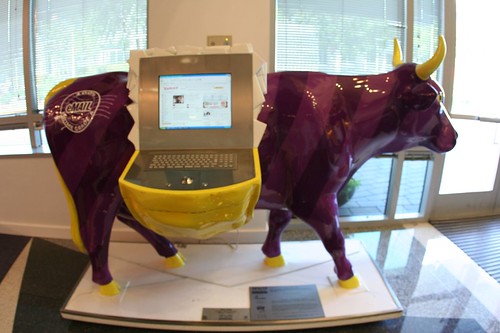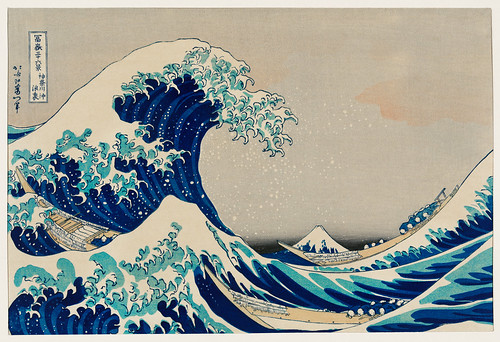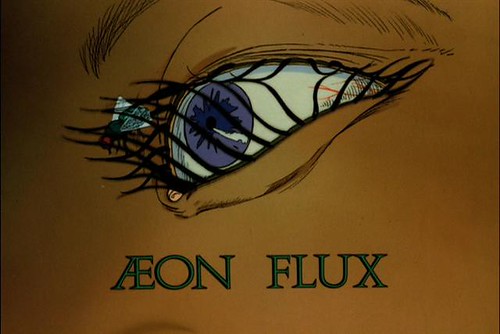The author of The Big Score is a lifetime inhabitant of Silicon Valley, Michael Malone. Malone went to school with Steve Jobs and spent his entire working life as a journalist covering technology companies of the area. His own career sounds like a veritable history of technology sector business reporting. Malone had written and or edited for the San Jose Mercury News, Fast Company, Upside, Forbes (ASAP), The New York Times, Wall Street Journal and Wired magazine. Now he co-hosts a weekly podcast on the goings on in Silicon Valley.
The book was originally published in 1985 and has been finished prior to the launch of the Apple Macintosh. At the the time of writing, Malone had been an early to mid-career journalist.
Silicon Valley time capsule
His book is time capsule of how Silicon Valley would have likely seen itself. The people portrayed in it lack the kind of artifice that pioneering PR people like Pam Edstrom would later drum into a young Bill Gates with media interview training and briefing books. Companies have since gone a step further and seldom engage with the media at all; instead putting out news by blog post or staged video production a la Apple under Steve Jobs and Tim Cook.
When we come to understand modern-day Silicon Valley five decades into the future, we won’t have the same level of intellectual honesty that we have in The Big Score because the artefacts and interviews will be so vanilla.
The book had become a largely forgotten business history book. Michael Malone revisited much of the history of covered in the book with a slightly longer term perspective in his 2002 work The Valley of Hearts Delight, which covered the history of the area from the 1960s to the dot com era. While The Big Score might have been forgotten, it was resurrected when Stripe through its publishing arm put it out again in 2021. They did this because while the book was forgotten by the general public, it has been read in libraries by university students and in their own collections by people like me who followed the technology sector.
Getting things wrong
In the introduction to the book, late career Malone freely admits the three things that he got wrong in The Big Score:
- The impact of the internet. While it didn’t reach public consciousness until I was in college; as a high schooler in 1969 Michael Malone had got a chance to try the ARPAnet during a class visit to Xerox PARC (Palo Alto Research Center). Secondly, the San Jose Mercury News had been using email and bulletin boards as part of their business process and offering since the 1980s. Yet Malone’s past familiarity gave him little idea of what was likely to lie ahead. His elevated access as a journalist to the great and the good of the technology sector didn’t help either; in fact Bill Gates made a similar error to Malone in the first edition of his book The Road Ahead. Gates worked very quickly with the publishers to get out a second edition that corrected his mistake. But I think Malone’s inability to see and his intellectual honesty about that is instructive for all of us
- While he had the chance to meet Doug Engelbart, Malone wrongly assumed that Engelbart was an eccentric inventor trying to get people to pay him his dues for technology that got bypassed. So, Engelbart doesn’t feature in The Big Score at all, despite The Mother of All Demos
- Intel’s Andy Grove, who Malone now considers to be the most important business man in the history of Silicon Valley doesn’t get a prominent role in the book. That’s not so bad as Andy Grove managed to write a lot in his own right, notably Only The Paranoid Survive
The Big Score on excess, greed and ethics
Malone’s The Big Score like Robert X Cringely’s later work Accidental Empires wastes no time in showing Silicon Valley’s underbelly. At the time of writing there was a large amount of industrial espionage happening between hardware companies, many start-ups were being developed by greedy experienced executives and top performing workers were burning out by trying to keep up self medicating with drugs and stimulants and alcohol to take the edge off. Something you still see today with engineers using Adderall to help them focus.
In this respect The Big Score is very different from other works that cover this era such as Chip War, Fire In The Valley and Where Wizards Stay Up Late.
The Big Score by Michael Malone tells the tale of Silicon Valley before the Apple Macintosh and the large media companies of Yahoo!, Excite, Alphabet or Meta et al.
While the counterculture did play a substantial role in the PC revolution, much of early Silicon Valley was about trying to accumulate wealth and while the successful are lionised for a while; most people did middling to ok at best. There was a work culture of hard working and hard drinking which meant that marriages didn’t last. The first barrier that Silicon Valley broke through was one of class, if you were bright and successful enough, class didn’t matter.
Robert X. Cringely in his later book Accidental Empires talked about how Bob Noyce (a key player at Shockley Labs, Fairchild Semiconductor and Intel) was rejected from joining a local country club despite his business success. Class still existed, but not within these companies to the same extent. Michael Malone in The Big Score conveys how the culture clash over class between its workers and those who funded it, ripped apart Silicon Valley and created an explosion of semiconductor companies that dominated from the late 1960s to the mid-1980s and beyond.
While Silicon Valley provided a greater egalitarian opportunity for the corporate man who worked there, women are seldom mentioned.
(Aside: At the start of my career in agency life I had LSI Logic as a client. LSI Logic was founded by Wilf Corrigan a veteran of Fairchild Semiconductor. Even then at the height of the dot com bubble; ‘real men’ were engineers or salesmen and women worked as secretaries or in public relations. As the company had grown their female corporate marketing manager had been pushed out of the headquarters and to the far flung European office, which was the smallest part of the business were she could do the least damage. I still remember how awkward it was to see her treated with distain by her main colleagues. She had many faults, but the treatment lacked decorum and discretion. This kind of culture is fostered from the top of an organisation down. Despite all this she had still been granted shares in the business and a good deal of share options meaning she could be comfortably well off and fund various American christian endeavours.
I even got to meet Corrigan, the son of a Liverpool docker came across as a Silicon Valley analogue of Michael Gambon’s character in The Layer Cake – rich but not sophisticated. Someone who mistook his mix of hard work and good fortune as a divine right.)
While much is said about the egalitarian nature of David Packard, William Hewlett and Bob Noyce, they still had the social conservatism of Leave It To Beaver. Malone eulogised Hewlett and Packard in his later award winning business history Bill and Dave. The Big Score portrays them with a clearer eye. But Bill and Dave came out later on when Silicon Valley was starting to lose its moral compass. H-P under Carly Fiorina had ruptured the H-P way and was an indicator of what was to come – so Malone recast them as mythical heroes.
Silicon Valley soap opera
Malone’s description in The Big Score of the break away of talent from Shockley Labs and Fairchild Semiconductor is accurate. But the story itself is engaging in the same way that the family drama of the soap operas that my Mam used to follow.
Stripe Press
Stripe Press have given The Big Score a much needed needed design refresh. They typography makes it easy to read and the book is immensely well read. The hardback cover, binding and paper are high quality for a book of this nature. It is the kind of book that will be an heirloom that can be handed on down to the next generation. If not for the value, for the historical knowledge. Beyond the self penned introduction at the front, the contents of the book itself were left alone.
Recommendation?
If you are student of Silicon Valley history or have read Malone’s other books The Big Score is a great complementary read. The republishing of the book by Stripe Press is timely given the fads of the metaverse and NFTs that have swept through the technology sector recently.
However if you wanted one book to start you off on your Silicon Valley journey, I wouldn’t recommend it. I would suggest that you read the following books before getting to The Big Score. Its not because these books are better, but that they provide a better initial entry point into the world of Silicon Valley and its history. Malone’s book was written relatively early one and other books can provide a better basic knowledge framework because of The Big Score‘s age:
- Accidental Empires by Robert X Cringely was something so different to what I’d been used to. I’d worked in industry, but hadn’t experienced anything like this. There are similarly great books to read like Fire In The Valley and Where Wizards Stay Up Late – but they aren’t as entertaining to read as Accidental Empires and pull their punches in order to be seen as ‘serious’ business books
- Architects Of The Web by Robert H. Reid. He wrote up the profiles of many of the pioneer web companies including Netscape, Real Networks, Marimba, Yahoo! and Silicon Graphics. It’s helpful to revisit the future the way it was envisaged during the late 1990s and see how the future has changed.
- Bill and Dave by Michael Malone tells the story of Silicon Valley pioneers Bill Hewlett and Dave Packard. Nowadays people think of them as just a brand of laptops or printers. But Hewlett Packard was much more. They pioneered the Silicon Valley start-up, their successor businesses Agilient, HPE and HP. Bill and Dave’s biggest impact was in Silicon Valley culture and lore. They built the company in a garage and started the egalitarian culture with The HP Way.
- Chip War by Chris Miller. Miller is a think tank wonk and history professor who tells the story of the semiconductor industry specifically through its relationship with the military industrial complex and its relationship with national security. Chip War deservedly was recommended as one of the FT’s business book’s of the year 2022.
- Dogfight by Fred Vogelstein. Fred Vogelstein is an experienced journalist who most notably covered the technology sector for Wired magazine. If your familiarity with the tech industry starts with Google and Apple. Dogfight is a great entry point.
- The New, New Thing by Michael Lewis. Pretty much every book that Lewis writes will compare unfavourably to his first book Liar’s Poker, but that book doesn’t mean that The New, New Thing shouldn’t be read. The book profiles Jim Clark, who founded Netscape and Silicon Graphics and aimed at the time to turn the healthcare industry with a new project. Lewis is capturing Clark when he is past his prime from a creative point of view. What Lewis does capture is the optimism and hubris in Silicon Valley that it can change anything.
- What The Dormouse Said by John Markoff. John Markoff is one of the titans of reporting on the business of technology alongside Steve Lohr and Walt Mossberg. In this book Markoff draws a line between the counterculture of the 1960s and the personal computing revolution through to Web 2.0
More on The Big Score here.





